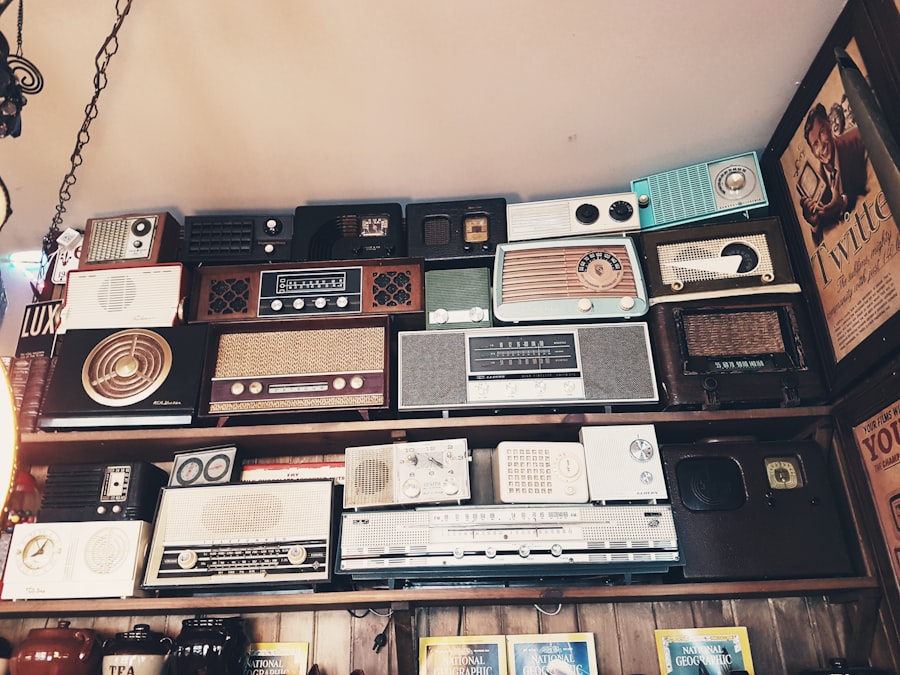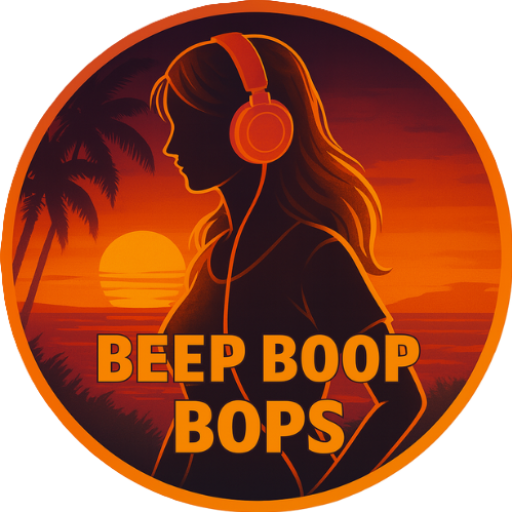Lo-Fi music, characterized by its raw sound quality and unpolished production, has roots that stretch back to the early days of recording technology. Emerging in the late 20th century, particularly in the 1980s and 1990s, Lo-Fi was initially a response to the polished, high-fidelity music that dominated the mainstream. Artists began to embrace imperfections, using low-quality recording equipment and techniques that resulted in a sound that felt more intimate and personal.
This movement was not just about the music itself; it was also a reflection of a cultural shift towards authenticity and a desire to connect with listeners on a deeper level. As you delve into the origins of Lo-Fi music, you may notice its intrinsic connection to nostalgia. The genre often evokes memories of simpler times, drawing on influences from past musical styles and cultural artifacts.
The use of vintage samples, old vinyl records, and even cassette tapes creates an auditory landscape that transports you back to earlier decades. This nostalgic quality is not merely coincidental; it serves as a powerful tool for artists who wish to evoke emotions and create a sense of familiarity. By tapping into shared memories and experiences, Lo-Fi music fosters a unique bond between the artist and the listener, making it a compelling genre that resonates across generations.
Key Takeaways
- Lo-Fi music originated as a response to the high fidelity of mainstream music, aiming to capture a raw and unpolished sound that evokes nostalgia for the past.
- Nostalgia in Lo-Fi music has a powerful emotional and psychological impact, often providing listeners with a sense of comfort, warmth, and longing for simpler times.
- Lo-Fi music production often incorporates nostalgic samples and sounds from old records, vintage instruments, and analog recording techniques to create a sense of nostalgia and authenticity.
- Nostalgia is a common theme in Lo-Fi music lyrics and visuals, often reflecting on memories, experiences, and emotions from the past.
- Nostalgia plays a crucial role in creating a sense of authenticity in Lo-Fi music, as it allows artists to connect with their audience on a personal and relatable level.
- Nostalgia serves as a powerful tool for connecting with audiences in Lo-Fi music, as it allows listeners to reminisce and connect with the music on a deeply personal level.
The Emotional and Psychological Impact of Nostalgia in Lo-Fi Music
The Emotional Journey of Lo-Fi Music
The emotional journey that Lo-Fi music takes listeners on is a hallmark of the genre, allowing them to connect with their own experiences while simultaneously engaging with the artist’s narrative. This emotional connection can have a profound psychological impact, enhancing mood, increasing feelings of social connectedness, and providing a sense of continuity in one’s life.
The Therapeutic Power of Nostalgia
As listeners immerse themselves in the soothing melodies and gentle rhythms of Lo-Fi tracks, they may experience a sense of calm and introspection. The genre’s ability to evoke nostalgia allows it to serve as a form of escapism, providing solace during times of stress or uncertainty. In this way, Lo-Fi music becomes more than just a listening experience; it transforms into a therapeutic tool that helps listeners navigate their emotions and find comfort in the familiar.
More Than Just a Listening Experience
Ultimately, Lo-Fi music’s use of nostalgia creates a unique and powerful listening experience that can have a lasting impact on listeners. By tapping into the complex emotions of nostalgia, Lo-Fi artists are able to create music that is both deeply personal and universally relatable, providing a sense of comfort and connection that can be hard to find in other genres.
The Use of Nostalgic Samples and Sounds in Lo-Fi Music Production

One of the defining features of Lo-Fi music is its creative use of samples and sounds that evoke nostalgia. Producers often incorporate snippets from old films, television shows, or even vintage advertisements, weaving them into their tracks to create a rich tapestry of sound. These samples serve as cultural touchstones, triggering memories and associations that resonate with listeners on a personal level.
When you hear a familiar voice or a well-known melody from your childhood, it can instantly transport you back in time, enhancing your emotional connection to the music. In addition to vocal samples, Lo-Fi producers frequently utilize sounds that mimic the imperfections of older recording technologies. The crackle of vinyl records, the hiss of tape, or the subtle distortion from low-quality microphones all contribute to the genre’s signature aesthetic.
These elements not only add depth to the music but also reinforce its nostalgic qualities. As you listen, you may find yourself appreciating the artistry behind these choices, recognizing how they enhance the overall experience. By blending contemporary production techniques with nostalgic sounds, Lo-Fi artists create a unique sonic landscape that invites you to explore your own memories while enjoying the present moment.
Nostalgia as a Theme in Lo-Fi Music Lyrics and Visuals
While instrumental tracks dominate much of the Lo-Fi genre, lyrics also play a significant role in conveying themes of nostalgia. Many artists draw upon personal experiences or collective memories to craft lyrics that resonate with listeners. When you engage with these songs, you may find yourself reflecting on your own past—whether it’s reminiscing about lost love, childhood adventures, or fleeting moments of happiness.
The storytelling aspect of Lo-Fi music adds another layer to its nostalgic appeal, allowing you to connect with the artist’s journey while exploring your own. Visuals accompanying Lo-Fi music often reinforce these nostalgic themes as well. Album covers and promotional artwork frequently feature retro aesthetics—think faded colors, vintage photographs, or illustrations reminiscent of past decades.
These visuals create an immersive experience that complements the auditory elements of the music. As you browse through playlists or discover new artists on platforms like YouTube or Spotify, you may notice how these visuals enhance your emotional connection to the music. They serve as visual cues that evoke memories and feelings associated with specific times in your life, further deepening your engagement with the genre.
The Role of Nostalgia in Creating a Sense of Authenticity in Lo-Fi Music
Authenticity is a crucial aspect of Lo-Fi music that sets it apart from more polished genres. In an age where digital perfection often reigns supreme, Lo-Fi artists embrace imperfections as a means of expressing their true selves. This authenticity is closely tied to nostalgia; by incorporating elements from the past—whether through sampling or production techniques—artists create a sound that feels genuine and relatable.
When you listen to Lo-Fi music, you can sense the sincerity behind each note and beat, making it easier for you to connect with the artist’s intentions. Moreover, this sense of authenticity fosters a community among listeners who appreciate the rawness and vulnerability inherent in Lo-Fi music. As you explore various tracks and discover new artists, you may find yourself drawn to their stories and experiences.
The genre encourages an open dialogue about emotions and memories, allowing you to share your own reflections while connecting with others who feel similarly. In this way, nostalgia becomes a unifying force within the Lo-Fi community, creating an environment where authenticity thrives and listeners can find solace in shared experiences.
Nostalgia as a Tool for Connecting with Audiences in Lo-Fi Music

In an increasingly fast-paced world filled with digital noise, nostalgia serves as a powerful tool for connecting with audiences in Lo-Fi music. By evoking memories and emotions tied to specific moments in time, artists can create an immediate bond with their listeners. When you hear a familiar sample or melody that resonates with your own experiences, it fosters a sense of intimacy that is often lacking in more commercialized music genres.
This connection is what makes Lo-Fi so appealing; it invites you into a space where your feelings are validated and understood. As you engage with Lo-Fi music, consider how nostalgia shapes your listening experience. Whether it’s through the soothing melodies that remind you of quiet evenings spent studying or the samples that transport you back to carefree childhood days, each track has the potential to evoke powerful emotions.
This ability to connect on such a personal level is what sets Lo-Fi apart from other genres; it creates an atmosphere where listeners can find comfort and solace amidst life’s chaos. Ultimately, nostalgia becomes not just an aesthetic choice but a vital component in building relationships between artists and their audiences—one soothing beat at a time. In conclusion, Lo-Fi music stands as a testament to the power of nostalgia in shaping our emotional landscapes.
From its origins rooted in authenticity to its ability to connect deeply with listeners through samples and themes, nostalgia permeates every aspect of this genre. As you continue to explore the world of Lo-Fi music, take note of how these elements resonate with your own experiences—allowing you to find comfort in both the familiar sounds and shared memories that define this unique musical landscape.



